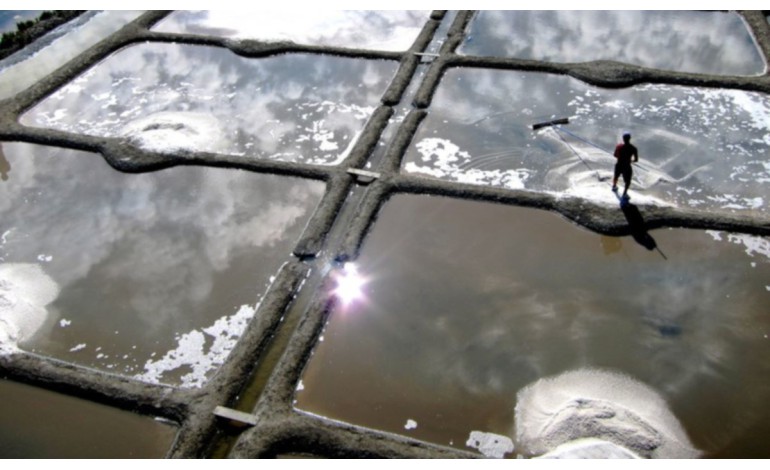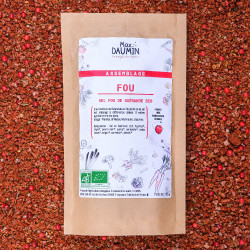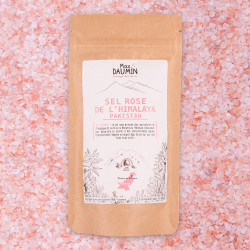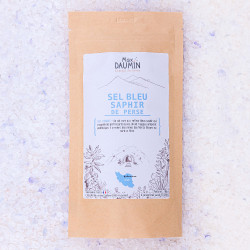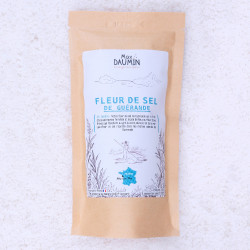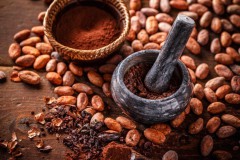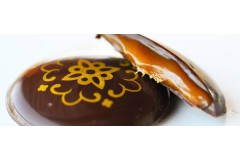Salt remains an essential and essential element for our lives. We have been using it since time immemorial. For our health, it makes it possible to maintain correct blood pressure and prevents disorders linked to an insufficient concentration of salt in the blood as it is seen in certain cases of dehydration. The minimum physiological need is around 2G/d. The iodine contained in sea salt is also vital for our metabolism. Iodine deficiency is associated with severe disorders; Inhibiting growth until you can cause mental disorders. The term Rottin was first a medical term in the 19th century designating people affected by these disorders. Cretinism disappeared from 1920 when iodine was systematically added the kitchen salts. Now we have the Terure Cretin used to designate stupidity.
Salt History
paleolithic & neolithic:
Since the dawn of time or more scientifically, since the beginning of prehistory (Paleolithic) about 3 million years ago, man was a hunter-chief. He found the salt necessary for his diet in the game and fish he hunted.
With the sedentarization of man during the Neolithic (-8000 years) man deeply changed his diet. By learning to cultivate wild plants, it was the beginning of agriculture accompanied by the domestication of animals (necessary for the work of strength). In order to meet food needs during scarcity, salt was necessary for food preservation but also for tannery. Then appear the first processed products that are kept in salt (the meats and fish were thus kept). Salt reduces water activity, water necessary for the development of microorganisms. At more than 10-15% salt, the bacteria responsible for fermentation and rotting of the food are stopped.
The main means of extraction of salt during this period was simply the evaporation of salt water on a home.
Bronze and Iron Age:
of -2000 to the Roman conquest (bringing together the ages of bronze and iron), the production of salt was organized and developed massively. New trade flows appear and salt becomes a symbol of prosperity of a company. The salt then enters a "food industry" allowing to make all kinds of cowards and taking advantage of a flourishing trade. (the stages of conservations are no longer a concern, the transport of these foodstuffs becomes easy).
Many operating sites bear witness to the dynamism of salt extraction. In France there are many sites on the Atlantic coast (including those of Guérande) and on the Languedoc coast.
Gallo-Roman time:
Thanks to the construction of the many Roman communications routes, trade in salt is experiencing a new intensification.
The Romans used salt to keep different vegetables. The Salata herba (salty herbs) were a typical dish of ancient Rome. This dish then gave birth to the word salad. The salad is rooted the salt.
They also gave us another well -known word: salary. The word salary comes from the Latin employee, derived from sal, salt. "Payment for work or service rendered", he initially appointed the salt ration provided to Roman soldiers (salary), then appointed the money compensation paid to buy salt and other food (employeeum). (Source wikipedia)
Middle Age:
During the 5th and 6th centuries, we began to structure the salt marshes, we build irrigation canals, eyelets and drain systems. Until the 13th century, salt remains exploited, however, that in monasteries, the monks perfectly controlled the extraction techniques. It should be noted that in 945 the monks of the Abbey of Landevennec (abbey located on the Crozon peninsula) drawn and built the salt marshes of Batz, who was going to give birth much later to the famous Guérande salt.
During the Middle Ages, Ignigène salt production techniques are improved (heated by fire, "ignis" fire). Large stoves are then used to heat the salt. We can see the last even visible in Salins les Bains (Jura).
Salt in the Middle Ages also refers to a tax: the gabelle. This first temporarily established by Saint Louis to finance its crusades, was permanently imposed by Philippe VI de Valois, in 1341. The monopoly of the sale of salt returned unwavering to royal power.
Renaissance:
At the Renaissance, salt needs exploded because of the significant development of the population. The techniques are becoming more and more elaborate. "SAUMODUS" are invented to transport brine, as in Hallstatt (16th century) or to the Royal Arc and Senans (Doubs). In the 18th century, graduation buildings allow the salt of the brine by evaporation to be concentrated (Arc-et-Senans).
Finally the gabelle is in Genesis more and more popular uprisings: the most important of them is probably the one, says Jacquerie des Pitauds, between 1542 and 1548, following the attempted unification by François I of the Gabelle regimes: Bordeaux, Angoumois and Saintonge revolt. Notables and the Governor General of Guyenne are massacred. The constable Anne of Montmorency restored order in the blood, but Henri II must flex and let the provinces return to their previous status. They will then be qualified as "written". Established in 1661 in Roussillon by Louis XIV, the gabelle is at the origin of the revolt of the angles (1667-1675).
In 1675, during the revolt of the red caps (which will be taken up in 2013 for another tax) occurred in Brittany and triggered by tax measures on stamped paper, tobacco and tin dishes, the simple evocation of The gabelle can set fire to the powder as the end of July 1675 during the forgiveness of Saint-Ullo. It was removed on December 1, 1790.
Contemporary time:
The industrial revolution promotes the exploitation of gem salts (rock salts) both by the machines created and the modern communication routes. It was also the time when chemists are entering. They develop soda and chlorine in particular (via salt). In 1789, the French chemist Nicolas Leblanc produced a process for obtaining sodium carbonate from sea salt and sulfuric acid. This is the birth of vitriol. In 1863, the Belgian chemist Ernest Solvay invented a new synthesis process of sodium carbonate by ammonia, from salt and chalk. More profitable and less polluting, the Solvay process quickly supplants its competitor and is still used today. Sodium carbonate is called in everyday language: soda or soda crystals.
Today salt represents a global production of 280 million tonnes per year. In France, production amounts to 6 million tonnes.
Good day,
max Daumin
